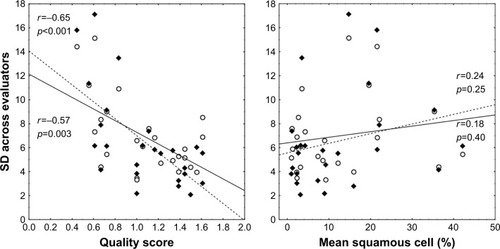Figures & data
Figure 1 Comprehensive sputum slide quality score.

Figure 2 Correlation between quality score (low to high, 0–2) and inter-evaluator variability (SD) for cell percentages across nine evaluators (left), and correlation between the mean level of squamous cells (%) and SD (right).

